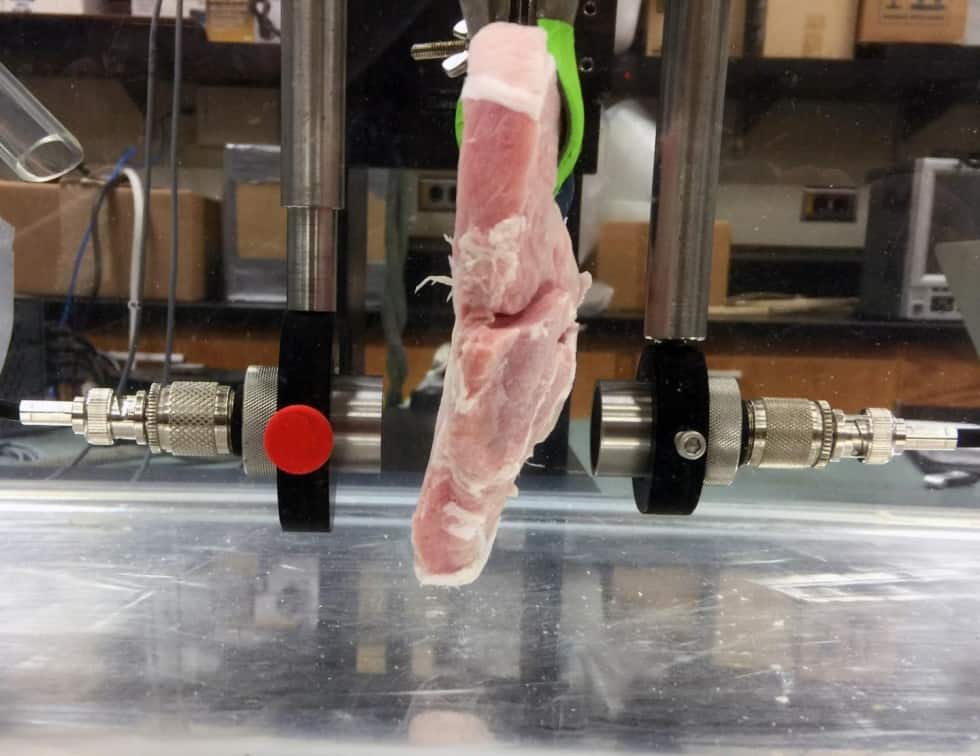Using shop-bought pork loin and beef liver the team, from the University of Illinois, demonstrated that improved signal processing techniques can provide high data rates (>30Mbps) with low error rates through tissues at frequencies that would allow propagation through the body (<10 MHz).

According to Prof Andrew Singer, who headed the group, the work opens up the possibility of being able to stream video from, and even control, implanted medical devices in the body.
"You can imagine a device that is swallowed for the purposes of imaging the digestive tract but with the capability for the HD video to be continuously streamed live to an external screen and the orientation of the device controlled wirelessly and externally by the physician,” he said.
Currently, most implanted medical devices use RF electromagnetic waves to communicate through the body, however the bandwidths that can be used are heavily regulated, which limits the communication rates of these devices. What’s more, RF electromagnetic waves are significantly attenuated by the human body, and efforts to overcome by increasing power can lead to heating of tissue.
The potential market for the new technology is thought to be huge. To date, cardiac patients represent the largest segment of patients making use of wireless telemetry from implanted medical devices. However the number and types of applications are increasing rapidly for implanted pacemakers and defibrillators, glucose monitors and insulin pumps, intracranial pressure sensors, epilepsy control, ingestible cameras for imaging the digestive track, and many more applications.
The researchers have received a provisional patent application on the high-definition ultrasonic technology and will presenting their findings at the 17th IEEE International Workshop on Signal Processing Advances in Wireless Communications, this July in Edinburgh, UK.




April 1886: the Brunkebergs tunnel
First ever example of a ground source heat pump?